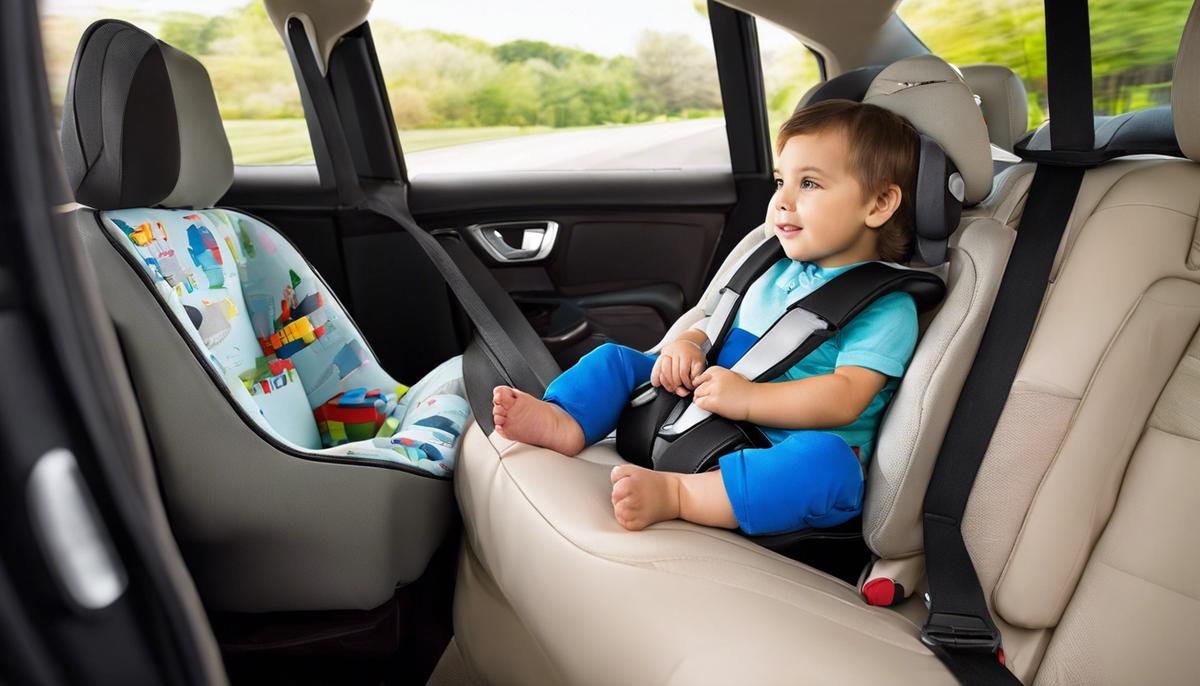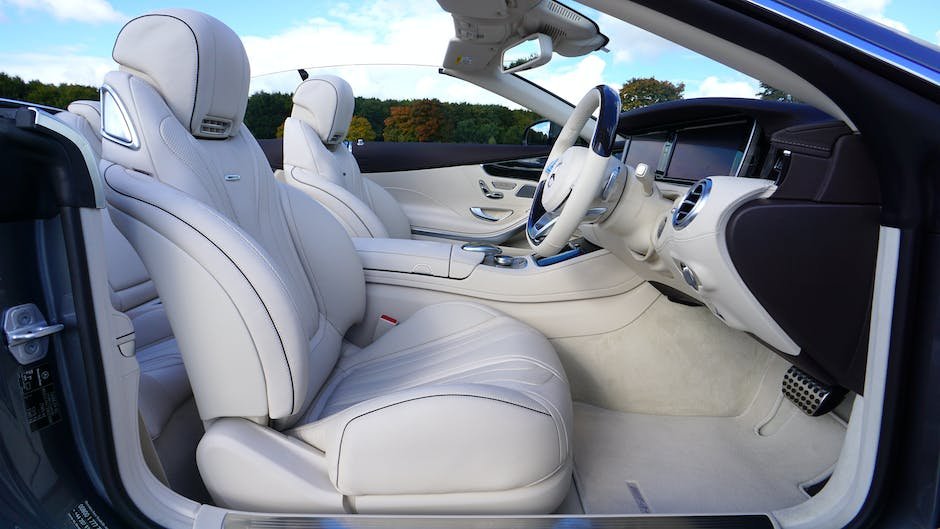
Traveling by car is a routine part of many families’ lives, but for those with an autistic child, it can present a unique set of challenges and safety concerns. Autism spectrum disorder (ASD) affects individuals in varying degrees, but common traits such as sensory processing issues, communication differences, and the need for predictable routines can greatly influence how a child experiences car travel. Recognizing the importance of these factors is vital in creating a safe and reassuring environment for both the child and their caregivers. This essay aims to provide insight into the specialized considerations necessary for ensuring car safety for autistic individuals, from selecting appropriate car seats to customizing the car environment, all to foster a secure and stress-free journey for everyone involved.
Understanding Autism and Its Impact on Safety
Understanding Car Safety for Kids on the Autism Spectrum
When it comes to keeping our little ones safe, car safety is right up there on the list of every parent’s priorities. But if you’re the loving caregiver of a child on the autism spectrum, you know the drill—standard safety measures sometimes need an extra layer of consideration to ensure they’re truly effective for your unique kiddo.
So, why is car safety different for autistic children? Let’s buckle up and dive in.
First off, sensory sensitivities are a common thread for many kids on the autism spectrum. The feel of a seatbelt, the sound of a car engine, or even the visual stimulation from passing scenery can be overwhelming to them. Traditional car seats and safety belts, though designed to protect, might not account for these sensitivities and can inadvertently cause discomfort or distress. That’s why finding a car seat with softer materials or adjustable straps that can be tailored to provide comfort without compromising safety is essential.
Communication is another key factor. In case of an emergency, a child with autism might struggle with effectively relaying their discomfort or the fact that their safety belt isn’t properly fastened. Clear and straightforward instructions using visual aids can be particularly helpful to ensure they understand how to stay secure and what to do should they need help.
Routine and predictability are comforting for most kids, but especially so for those with autism. A sudden change, such as a different vehicle or seating arrangement, can throw a wrench into their sense of security. Establishing a consistent pre-trip routine, like a safety checklist performed together, can ease anxiety and promote a safer, more reassuring experience.
Moreover, wandering is a concern for many parents of autistic children. The thought of a child unbuckling and leaving the car is nothing short of terrifying. There are specialized locks and alarms that can alert a driver if a seatbelt is undone or a door is opened, which adds an extra layer of security for those moments when eyes must remain on the road.
Training is beneficial not only for the child but also for those involved in transport. This includes teaching emergency responders, educators, and extended family members about how to approach car safety with an autistic child’s needs in mind. Simple adjustments in communication and approach can make all the difference.
Lastly, patience is the heart and soul of the journey. Every child on the spectrum is unique, with their own likes, dislikes, and comfort thresholds. It might take time to find the right combination of tools, routines, and equipment to ensure car trips are both safe and comfortable.
Car safety for autistic children isn’t about reinventing the wheel; it’s about adapting the ride so every child can travel safely and happily. A little extra thought and preparation go a long way in making sure that each journey is as smooth as possible, giving parents peace of mind and kids the opportunity to enjoy the ride.
With love and understanding, the road ahead looks safe and comforting for our special passengers. Buckle up, and let’s keep those precious cargos secure.

Choosing the Right Car Safety Seats
Discovering the Right Car Seat Comfort for Autistic Children: Features to Look For
Navigating the world of car seats for any parent can be a bit like trying to solve a complex puzzle. But when a child has autism, the challenge takes on new dimensions. The right car seat can turn car rides from stressful to soothing, benefiting the whole family. It’s about finding a seat that caters to unique needs, ensuring safety without compromising on comfort.
Concave-shaped Seats for Cozy Support
Comfort is king, and one of the foremost features to look for in car seats for children with autism is a contoured, concave shape. These seats provide a snug, secure feeling, much like a calming embrace. A cozy fit can ease the anxiety and sensory overload that often accompany car rides for children on the spectrum.
Minimalistic Design for Fewer Distractions
A car seat with a simple design can be a game-changer. These seats lack the myriad of buttons, textures, and patterns that can overwhelm an autistic child. A minimalist approach can help create a serene environment, allowing the child to relax and enjoy the journey.
Adjustable Recline for Sensory Regulation
Children with autism may find certain angles or positions uncomfortable. Therefore, a car seat with multiple recline positions can help in finding the perfect angle for each child’s preference. This adjustability can accommodate sensory needs, whether it’s the desire to sit upright and engage with surroundings or to recline slightly and retreat from sensory input.
Convertible Seats for Long-Term Use
Investing in a good-quality convertible car seat means children can grow with the seat from toddlerhood to the booster stage. This not only assures physical comfort but also provides a consistent, predictable environment that children with autism find reassuring.
Integrated Harness for Extra Security
Harness systems in car seats provide an additional layer of safety, as well as a snug fit that can be soothing. Look for seats with a five-point harness that can be easily adjusted to accommodate a growing child without compromising on that cozy, secure feeling.
Choose Hypoallergenic and Breathable Fabrics
Sensitive skin and temperature regulation issues are common in autistic children, so opting for hypoallergenic and breathable fabric ensures that the car seat doesn’t become a source of irritation. These materials can help keep the child comfortable, dry, and happy during both short errands and long journeys.
Built-in Technology for Distraction and Peace
Some car seats come equipped with built-in speakers or tablet holders, allowing parents to play calming music or show visual stories to keep their child entertained and calm while on the move. This kind of distraction can prevent restlessness and make car rides a more pleasant experience for everyone involved.
Childproof Buckle Systems for Independence
For the child yearning for a bit of independence, car seats with childproof buckles offer the chance to buckle up by themselves, under the watchful eye of a parent. This can foster a sense of autonomy while still ensuring that the child is properly secured.
Support and Advice from the Autism Community
Before making a decision, consider consulting with other parents in the autism community. They often provide invaluable advice and personal testimonials about what’s worked for their children. After all, shared knowledge is invaluable when it comes to navigating the parenting journey, especially in a community that understands exactly what you’re going through.
Choosing the ideal car seat for a child with autism isn’t just about adhering to safety standards; it’s about harmonizing those standards with the unique needs of the child. It’s a journey to find that quintessential seat: a haven on the road that offers comfort, safety, and happiness for the child, which in turn, brings peace of mind for the entire family.

Car Safety Tools and Modifications
When considering car safety for autistic children, it’s also crucial to acknowledge the unique needs these kids may have when it comes to the selection and modification of a car seat. A car ride can be a challenging experience—full of unfamiliar sights, sounds, and sensations. As such, finding the right car seat that not only safeguards but also comforts a child is paramount.
Choose a car seat with a concave shape, which hugs a child’s body, offering a reassuring sense of security. This design can help with body awareness and provide physical boundaries that many children find comforting. Additionally, look for a minimalistic design that eliminates unnecessary straps or padding that could be distracting or overstimulating.
For many children on the autism spectrum, sensory regulation is a daily consideration, so a car seat with adjustable recline can be a godsend. This allows the seat to adapt to the child’s sensory needs at any given moment, whether that means a more reclined position for a calming effect or an upright position for better interaction and viewing of the surroundings.
Convertible car seats with extended weight and height limits can accommodate a child’s growth over the years, making it a cost-effective and familiar piece of equipment in the family vehicle. Stability is key, and a consistent car seat can be a comfort in itself.
Safety is always the top priority, so an integrated harness system in the car seat ensures that the child is securely strapped in, reducing the risk of injury in case of an abrupt stop or accident. Opt for a five-point harness that offers a snug fit and distributes the forces of a crash across the strongest parts of the body.
When it comes to long drives or even short jaunts to the grocery store, comfort is king. Choosing hypoallergenic and breathable fabrics for the car seat can make all the difference in preventing skin irritations and ensuring the child remains cool and comfortable throughout the journey.
For older children seeking a measure of independence, car seats with childproof buckle systems allow them to buckle themselves in without the risk of accidental unbuckling. This promotes autonomy and can help build self-confidence in their abilities, all while ensuring their safety.
Another strategy is the incorporation of built-in technology features designed to soothe and distract a child during a car ride. This can include elements like calming LED lights, gentle vibrations, or integrated speakers that can play soft music or audio stories that the child enjoys. Evaluate what sensory elements work best for your child and seek a seat that provides these features without overstimulation.
It’s important to remember that modifications and adaptations may not be one-size-fits-all, and what works for another child may not be suitable for your own. Engaging with the autism community, including online forums, local support groups, and occupational therapists, can be an invaluable resource. Fellow parents and specialists may offer insights and share experiences that can guide you in your choices. They understand the trials and errors involved in finding the right combination of safety and comfort and can provide a wealth of support and advice. Through community engagement, you’re not only finding solutions for safe travel but also creating a network of understanding and knowledge that goes beyond the vehicle—it’s about the shared journey of raising children with unique needs, together.

Training and Preparing for Travel
Embracing the Journey Together: Navigating Car Travel with Autistic Children
Ensuring safety during car rides extends beyond the grasp of standard guidelines when it comes to kids with autism. While certain accommodations might already be ticked off the checklist, embracing the journey means diving deeper into the nuances of car travel with these wonderful children. Let’s explore the essentials to make each car trip a joy rather than a chore.
Starting Small and Building Confidence
Gradual acclimation is key. Begin by spending time in the vehicle while it’s stationary, allowing the child to explore the space and become familiar without the added stress of movement. This step can be a game-changer, slowly building up their comfort levels before hitting the road.
Personalized Playlists and Audio Comforts
Music and stories can be profoundly soothing. Crafting a personalized playlist with favorite songs, calming sounds, or beloved stories can help create an auditory environment that grounds and comforts an autistic child during rides.
Interactive Car Games and Activities
Keeping an autistic child engaged is vital. Simple, interactive car games that tap into their interests can be invaluable. Think of activities involving their favorite characters or subjects that not only entertain but also stimulate their minds in a familiar, structured way.
Safe Spaces and Break Time
Respecting the need for downtime, it’s wise to plan for frequent breaks during longer trips. These provide a safe space for the child to regroup and decompress. A quick stop at a familiar location or a designated quiet area in the vehicle can work wonders.
Personal Comfort and Security Items
Never underestimate the power of a beloved comfort item. Be it a stuffed toy, a blanket, or a special object, these items can be anchors of tranquility in a sensory-rich environment like a car.
Inclusive and Transparent Planning
Involvement in the travel plan can foster a sense of control and participation. Discussing the travel itinerary, including destinations and timelines, can help an autistic child visualize and prepare for the journey, reducing anxiety about the unknown.
Reward Systems for Positive Reinforcement
Positive reinforcement works wonders. Establishing a reward system for good travel behavior not only paves the road for smoother journeys but also reinforces a sense of accomplishment and self-discipline.
Continuous Learning and Adaptability
Lastly, remember that each child is unique, and what works today may need tweaking tomorrow. Stay observant, keep learning, and remain flexible. Being a part of forums or groups dedicated to parents of autistic children can provide a wealth of resources and shared experiences to draw from.
As parents within this vibrant community, you’re never alone. Together, hand in hand, we can navigate the road of life with our children in the backseat, safe, content, and ready for the adventures that await. Happy travels!

The journey toward ensuring safe and comfortable car travel for a child with autism is a thoughtful process—one that extends far beyond the choice of car seats and safety tools. It encompasses a commitment to understanding the unique needs of each child, embracing adaptive strategies and modifications, and investing time in preparation and practice. By equipping ourselves with knowledge and fostering patience, we create an environment where every car ride can be an opportunity for growth and positive experiences. As we drive forward, let us remember that the most important destination is not a place on a map, but rather a shared space of security and understanding, where every child feels valued and protected.




